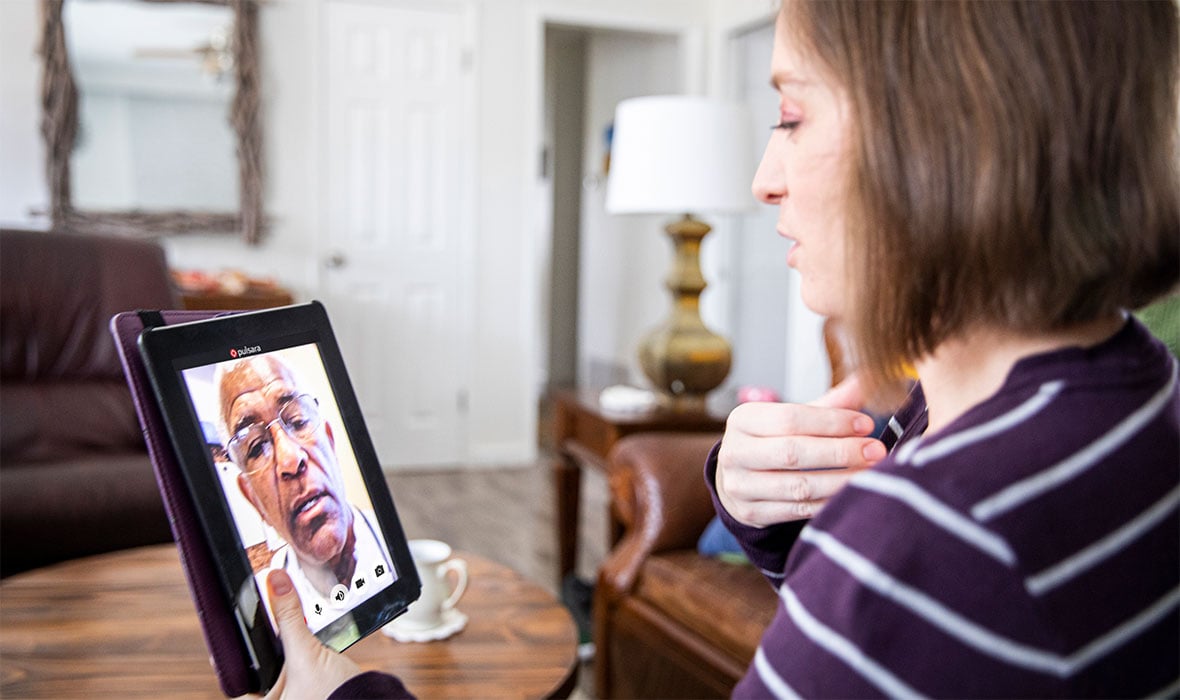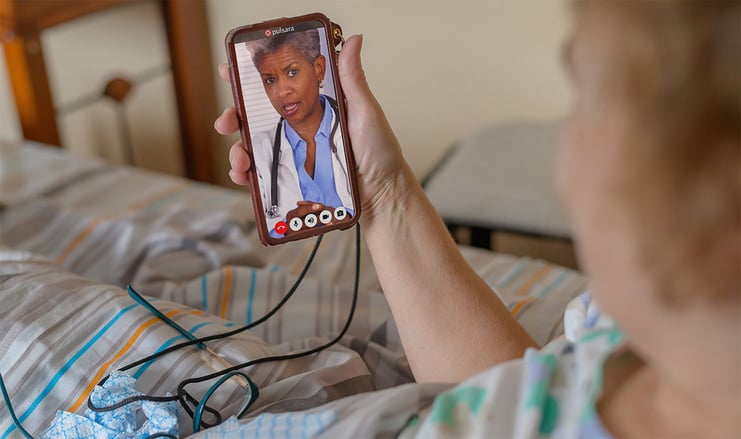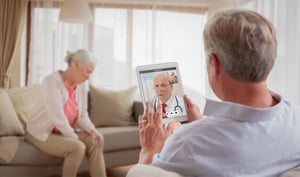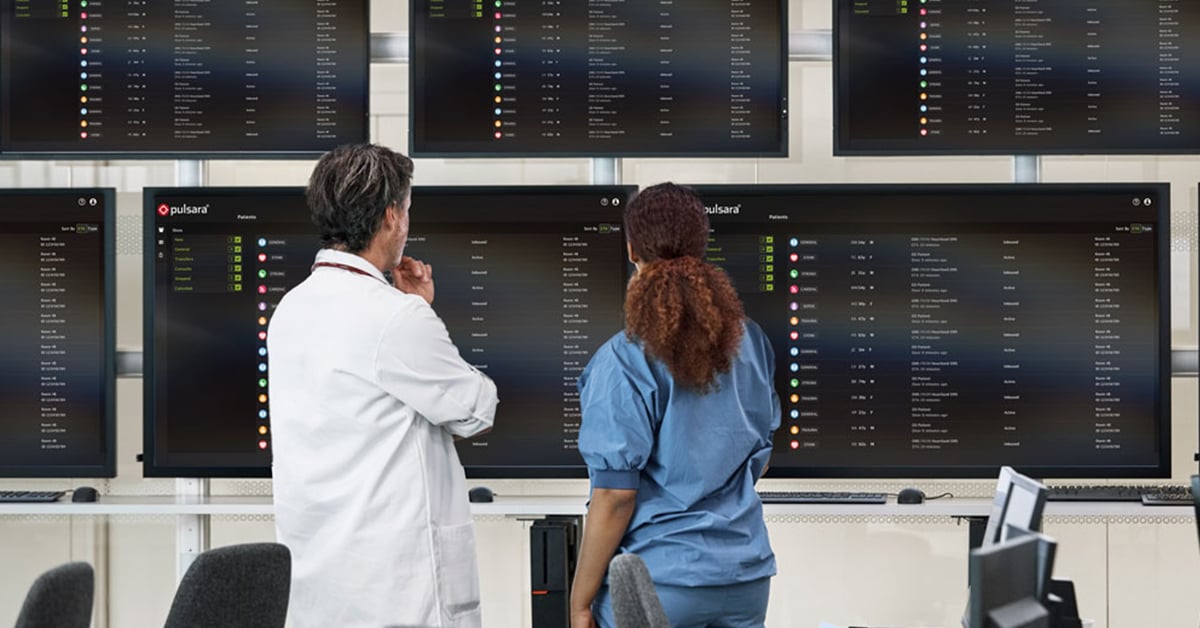Pulsara Around the World - May 2025
April Recap Optimize Patient Transfer WorkflowsOur newest package, Pulsara TRANSFER OPS, empowers teams to streamline communication within and across...
3 min read
 Kinsie Clarkson
:
Apr 13, 2020
Kinsie Clarkson
:
Apr 13, 2020

Why did it take a global pandemic to convince healthcare providers to try telemedicine?
Up until last month, telemedicine seemed like a healthcare innovation of the future to many. But now, as we face the fallout of COVID-19, telemedicine is exploding at a rate that was unthinkable only a few months ago. Such dramatic numbers might make us ask why this has taken so long, when the concept of doctors being able to see patients remotely has been around for years.
At the end of 2019, video conferencing platform Zoom had 10 million registered users. In March, that number jumped to 200 million. While a fraction of that number are medical appointments, physicians are seeing record high numbers for virtual appointments. Stanford Health Care is seeing 3,000 patients through televisits each day, an unprecedented 40% of all their clinical visits. That’s 50 times higher than in previous months. Massachusetts General Hospital has seen their number of virtual appointments multiply 10 to 20 times in the last few weeks.
Telemedicine has met with a great deal of resistance in the past. Concerns about privacy, HIPAA compliance, and the unknown have prevented virtual medical appointments from becoming mainstream. That is, until now. Last month, longstanding barriers that have blockaded telemedicine began to crumble. The Trump administration expanded telehealth services to Medicare patients. States like New York, California, and Florida have begun waiving regulations that a physician must be licensed in the state in order to provide care.

As providers are scrambling to transition in-person appointments online, they’re seeing the advantages and unexpected benefits of telemedicine. Here are five ways telemedicine is aiding in the fight against COVID-19.
1. Giving patients a virtual option for regular appointments reduces their risk of unnecessary exposure.
Normal health issues don’t stop for a pandemic. Moving appointments to a virtual setting can help doctors provide follow-up care for at-risk patients remotely, ensuring that patients aren’t accidentally exposed to COVID-19. It also works the other way: patients who are worried they may be infected but don't need to go to the hospital can check in with their doctor through live video, without worrying about exposing others. It also eliminates the possibility of picking up COVID-19 at the hospital if it turns out they weren’t already infected.
2. Through remote appointments, quarantined healthcare providers can still care for patients.
If a healthcare provider is exposed to COVID-19 and must self-quarantine, or is at a higher risk of serious complications from COVID-19, telemedicine can provide them with a way to continue working. Clinicians can conduct virtual appointments from home and still provide patients with a high level of care, while relieving some of the strain on the care teams on-location at the hospital.
3. Even in the hospital, clinicians can see patients remotely, conserving valuable Personal Protective Equipment (PPE).
Using telemedicine within the hospital itself can also prevent clinicians from being exposed to COVID-19. By setting doctors up with video-enabled devices, they can conduct examinations without ever entering a potential COVID-19 patient’s room, saving PPE for nurses and other caregivers who come in contact with patients.
4. Telemedicine can help doctors see patients who would otherwise avoid making appointments.
While there are still many obstacles with how much insurance companies will agree to cover for remote appointments, telemedicine may reduce the cost of some appointments. This could help attract patients who otherwise could not afford a doctor’s visit. Being able to expand into new demographics and provide them with quality care can help doctors better mitigate the spread of COVID-19.
5. Telemedicine appointments allow for new flexibility, discoveries, and creativity in patient care.
While the COVID-19 pandemic has changed our lives in many negative ways, there is a silver lining: it has illuminated the human capacity for creativity, resourcefulness, and discovery in the midst of tough circumstances. Clinicians who previously assumed that their services could not be adapted to a telemedicine format are discovering that virtual appointments can give them a valuable insight into patients’ home lives, helping them come up with therapy ideas specifically suited to each patient’s home environment. Sahana Baker-Malone, a pediatric occupational therapist, told The Mercury News: “We’re getting to participate in their normal life as opposed to bringing them into our clinic, where we see kind of constructed sessions.”
Now that telemedicine is being tested, it’s likely to expand from here. Dr. Ian Nelligan, a Clinical Assistant Professor at Stanford, predicts that this pandemic will drive demand for virtual appointments. “The future is bright in this area of medicine. COVID-19 was a shot in the arm. We’re going to see adoption happen much more quickly,” he told the Stanford Medicine News Center.

A pandemic may not solve all of the concerns surrounding telemedicine, but it may open the door for some positive growth in how we handle communication in healthcare. Kris Kaull, Chief Marketing Officer at Pulsara and co-founder of EMS1.com, sees a bright future for telemedicine, and believes that in the midst of COVID-19, it's important to look for solutions that will be sustainable: "We need to be asking questions like, 'Is my telemedicine solution flexible? Can I dynamically add new clinicians to the case on the fly? Can I easily connect to the patient?' Your telemedicine solution should be simple to adopt and implement. It needs to work for today’s pandemic, yesterday’s crisis, tomorrow’s disaster, and every medical care coordination need in between."
COVID-19 is having a heavy impact on Americans. It’s costing us lives, physical and mental health, jobs, and the ability to have normal social interactions. But it may also force us to adapt, pushing us toward new innovations that can improve the quality of healthcare for the future.
Platforms like Pulsara are completely HIPAA compliant and offer healthcare providers with safe ways to communicate with one another. Learn more about Pulsara's FREE Covid-19 package here.

April Recap Optimize Patient Transfer WorkflowsOur newest package, Pulsara TRANSFER OPS, empowers teams to streamline communication within and across...

Leverage Existing Pulsara Capabilities for Streamlined Patient Movement Efficient patient transfers are the lifeblood of a well-functioning...

Although they have the advantage of prior awareness and preparation, large-scale planned events pose unique challenges for emergency management...